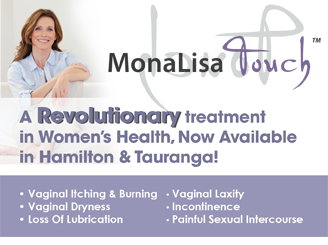Best practice on the use of Long Term HRT
October 1, 2015, no responses, by: Women Health Center, Tags:
All of us are confronted by the patient how has been on Hormone Replacement Therapy (HRT) for some time and does not want to go off it. Long-term use of (HRT) is certainly controversial.
If we combine medical evidence and clinical experience we can provide some guidance for the next time a patients asks, “How long should I continue my hormone therapy?”
The mean duration of bothersome vasomotor symptoms (VMS) is more than 10 years. Thus, in many women, short-term HRT will not be sufficient to control bothersome symptoms.
And there are indications for long-term HRT for symptoms other than VMS. We know that not only standard doses but also low doses of HRT are sufficient to prevent osteoporosis.
HRT and Osteoporosis Prevention
When women are at high risk or HRT i.e. low bone mineral density (BMD) or a maternal history of osteoporotic fracture then long term HRT is appropriate. If osteoporosis prevention is the only indication for HRT use, low-dose oestrogen is preferred. We can go as low as 0.325mg (standard 0.625 mg to 1.25mg) of equine oestrogens or 0.014mg (standard 0.05mg) per day of transdermal formulations.
Withdrawal of oestrogen,unlike bisphosphonates, results in a substantial loss of BMD during the first several years after stopping HRT. Accordingly, it may make sense to check your patient’s BMD 2 or 3 years after stopping hormones. Biphosphonates tend to have a longer-acting impact on BMD,
What Are the Risks of HRT?
The data from the Women’s Health Initiative indicates that 5 to 7 years of systemic HRT is generally safe when initiated by women in their 50s, or within 10 years of the onset of menopause.
There is unfortunately no randomized data assessing benefits and risks of such therapy when this is exceeded.
Given combined oestrogen-progestin therapy’s (EPT) less favourable safety profile, including a small increased risk for breast cancer, long-term use of oestrogen therapy (ET) to prevent osteoporosis is more prudent than EPT. Although it is clear that ET is appropriate post-hysterectomy, for menopausal women who have an intact uterus, low-dose ET without progestin, along with regular endometrial monitoring, can be considered.
One additional point regarding choosing an appropriate HRT formulation: Although oral oestrogen clearly increases the risk for venous thrombosis, transdermal oestradiol does not appear to have this effect. Because long-term use of HRT usually involves older women, and age is an important risk factor for thrombosis, I consider the transdermal route to be preferable for ET in women using HT for an extended duration.
When VMS have resolved for several years on an initial dose of oestrogen, we would encourage patients to try a lower dose, and provide reassurance that we will put them back on the original dose if VMS or loss of sense of well-being occurs with the lower dose. Patients can simply get in touch with us to prescribe their original does. If a patient has been feeling well while using a low dose of HRT, and if that patient is not at elevated risk for osteoporosis, we would encourage her to discontinue systemic HRT. Because lowering the dose or discontinuing systemic HRT can result in symptomatic vulvovaginal atrophy, I often prescribe vaginal oestrogen therapy should be initiated as appropriate.
Categories
- Endometriosis (3)
- Female Sexual dysfunction (1)
- General (7)
- Incontinence (1)
- Infertility (2)
- Interstitial Cystitis (1)
- Menopause (5)
- Overactive Bladder (1)
- Polycystic Ovaries (1)
- Surgical (2)
Archives
- October 2017 (2)
- March 2017 (1)
- March 2016 (1)
- February 2016 (1)
- November 2015 (3)
- October 2015 (5)
- September 2015 (1)
- August 2015 (2)
- July 2015 (3)
- March 2015 (2)
- January 2015 (1)
Recent Posts
- How Accurate is biopsy sampling in Endometrial Cancer?
- Hormone Therapy: WHI study Follow up reveals no change in Mortality after 18-Year
- How to manage Interstitial Cystitis/Bladder Pain Syndrome?
- Potential Benefits of Diagnosis and Treatment on Health Outcomes Among Elderly People With Symptoms of Overactive Bladder
- The Zika Virus summarised



Leave a Reply